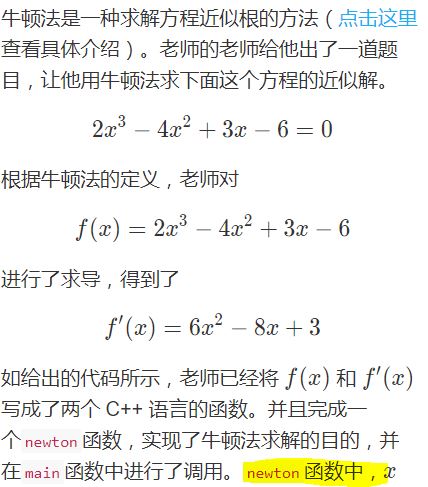In numerical analysis, Newton's method (also known as the Newton–Raphson method), named after Isaac Newton and Joseph Raphson, is a method for finding successively better approximations to the roots (or zeroes) of a real-valued function. It is one example of a root-finding algorithm.
- {\displaystyle x:f(x)=0\,.}
The Newton–Raphson method in one variable is implemented as follows:
The method starts with a function f defined over the real numbers x, the function's derivative f ′, and an initial guess x0 for a root of the function f. If the function satisfies the assumptions made in the derivation of the formula and the initial guess is close, then a better approximation x1 is
- {\displaystyle x_{1}=x_{0}-{\frac {f(x_{0})}{f'(x_{0})}}\,.}
Geometrically, (x1, 0) is the intersection of the x-axis and the tangent of the graph of f at (x0, f (x0)).
The process is repeated as
- {\displaystyle x_{n+1}=x_{n}-{\frac {f(x_{n})}{f'(x_{n})}}\,}
until a sufficiently accurate value is reached.

具体实现过程如下:
#include <iostream>
#include<cmath>
using std:: cin;
using std::cout;
using std::endl;
#define EPSILON 1e-6
double f (double x)
{
return 2*pow(x,3)+4*pow(x,2)+3*x-6;
}
double f_prime(double x)
{
return 6*pow(x,2)-8*x+3;
}
double new (double(*f)(double),double(*f_frime)(double))
{
double x=1.5;
while(fabs((*f)(x))>EPSILON)
{
x=x-(*f)(x)/(*f_prime(x));
}
return x;
}
int main()
{
cout<<newton(f,f_prime)<<endl;
returen 0;
}




